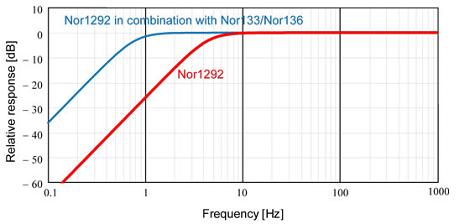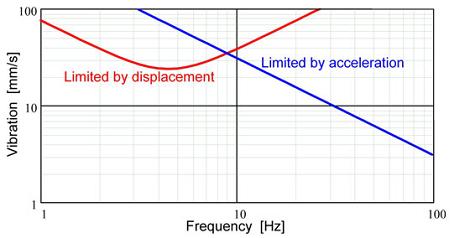The tri-axial geophone Nor1292 is a sensitive transducer for vibration velocity based on a rugged geophone construction used by seismologists and geophysicists for decades. One main application is for the measurement of vibrations in buildings.
The frequency response is essentially flat from the resonance frequency 4,5 Hz and up to at least 500 Hz. However, by using the frequency compensation found in some Norsonic instruments like Nor133 and Nor136, the applicable frequency range may be extended downwards to 1 Hz. This also applies if the signal is measured as function of frequency, e.g. 1/3-octave bands where frequency correction may be used.
The transducer is a passive device and needs no power for operation.
The geophone Nor1292 plugs directly into the input socket of the six channel vibration analyzer Nor136. It will then connect directly to channel 1, 2 and 3. A second geophone may be connected to channel 4, 5 and 6 of the same Nor136 instrument by the use of an adapter.By the use of adapters, the unit may be connected to the tri-axial vibration analyzer Nor133.
The unit may also be applied in connection with a suitable sound level meter like Nor140. Only one direction can then be measured at the time by a one-channel instrument.


The frequency response may be corrected for use below the resonce frequency of 4,5 Hz
Measurement range
The measurement range is limited upwards by the maximum displacement the transducers can handle and the maximum acceleration where the transducer follows the movement of the supporting surface. The maximum displacement is 1,8 mm peak-to-peak giving an RMS-value of 0,6 mm. Below resonance this will increase since the coil will follow the movement of the housing. If the acceleration is too high, the geophone will not follow the vibrating surface to be measured. The limit in the diagram below is set to 2 m/s2.


The lower limit is set by the noise floor in the transducer and measuring instrument. If the instrument has an electrical noise floor of 0,3 μV – achievable for restricted frequency bands – this corresponds to a vibration level of 10-8 m/s or 0,00001 mm/s with the nominal sensitivity of 26 Vs/m. The noise in the transducer itself is even lower – mainly determined by the source resistance of 380 ohm which corresponds to about 0,04 μV in a bandwidth of 250 Hz.